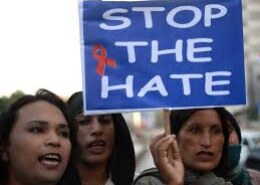In what ways do you believe the Transgender Persons (Protection of Rights) Act 2019’s provisions fall short of the high standards set by the Supreme Court’s progressive rulings throughout the years in this area?
Challenges Faced by Transgender Individuals in India Transgender individuals in India confront formidable challenges, encompassing societal stigma, discrimination, and a lack of legal recognition. Despite legislative strides aimed at safeguarding transgender rights, their effective enforcement remaiRead more
Challenges Faced by Transgender Individuals in India
Transgender individuals in India confront formidable challenges, encompassing societal stigma, discrimination, and a lack of legal recognition. Despite legislative strides aimed at safeguarding transgender rights, their effective enforcement remains pivotal for substantial change and genuine equality.
Key Issues Confronting Transgender Individuals:
1. Societal Stigma: Transgender individuals endure social ostracization and exclusion due to entrenched cultural norms and limited awareness.
2. Discrimination: They face systemic discrimination in crucial areas such as employment, education, healthcare access, and social services, curtailing their opportunities for personal and professional advancement.
3. Lack of Legal Recognition: The absence of legal acknowledgement denies transgender individuals essential rights, including identity documentation, healthcare entitlements, and protection against discrimination.
Significance of Robust Implementation of Legal Frameworks:
1. Rights Protection: Effective implementation of laws guarantees fundamental rights for transgender individuals, ensuring they receive fair treatment and legal protection against prejudice.
2. Cultural Inclusivity: It fosters a culturally inclusive society that celebrates diversity and acknowledges the validity of all gender identities.
3. Empowerment: By enforcing supportive policies, transgender individuals are empowered to live authentically, contributing to a society free from fear and discrimination.
Conclusion:
By challenging societal norms, reinforcing legal protections, and actively implementing supportive policies, India can cultivate an inclusive environment where transgender individuals are esteemed, supported, and empowered to live their lives openly and confidently.
See less

The fight of transgenders for equal rights is decades old in India. After some consecutive judgements government of India tried to legislate a Bill on transgender rights. Earlier a Bill was drafted in 2016. It had many controversial provisions, therefore it failed to pass in Parliament. Recently, thRead more
The fight of transgenders for equal rights is decades old in India. After some consecutive judgements government of India tried to legislate a Bill on transgender rights. Earlier a Bill was drafted in 2016. It had many controversial provisions, therefore it failed to pass in Parliament. Recently, the government brought another bill removing some of the earlier controversial provisions, and this bill successfully passed on the floor of Rajya Sabha. A critical analysis of the bill shows that this bill does not comply with many of the guidelines suggested under various judgements of the Supreme Court as well as some of the progressive High Courts judgements.
Judgments Over The Years
Bill Fails On Expectations
Bill Does Not Fail On Expectations
The Transgender Bill includes several progressive provisions as guided by the Supreme Court in various judgements. Some of these provisions are as follows;
The battle for equality and recognition for the transgenders has been long and still ongoing. However, judicial recognition to address rights and provide remedies matters for the project of equality and dignity. The Transgender Bill has many flaws and provisions against the guidelines given in many judgements. Our Parliament must not let down the community that fought for their rights for decades. Transgender people in India should be able to live with dignity and non-discrimination, and have equal access to education, employment, and health services.
See less